Why won’t Secretary Mattis say the US controls Syrian oilfields?
Bob Corker, Chairman of the US Senate Foreign Relations Committee, said he doesn’t think “enough has been said or made” of the Conoco gas field incident that left hundreds of Russian fighters dead. He’s right.
On the night of February 7, hundreds of fighters from various countries, backed by artillery, multiple rocket launcher systems and Soviet tanks, emerged from a row of villages near the eastern Syrian city of Deir Ezzor and advanced towards the one of the country’s largest natural gas fields.

Somewhere, an American Special Operations commander picked up a phone. But the Russian liaison on the line said the troops weren’t his. The resulting three hours of U.S. airstrikes killed and wounded hundreds of pro-regime fighters, reportedly including some 300 Russian paramilitary contractors, making it the deadliest engagement between American and Russian forces in at least half a century.
During CIA Director Mike Pompeo’s secretary of state confirmation hearing on Thursday, Bob Corker, Chairman of the Senate Foreign Relations Committee, said he doesn’t think “enough has been said or made” of the Conoco gas field incident that left hundreds of Russian fighters dead. He’s right.
The attack was by all indications a probe of the American military’s willingness to defend strategic territory with force. If so, Damascus and Moscow got their answer: Over the following weeks, U.S. Special Operations Forces and their Kurdish People’s Protection Units (YPG) and Arab allies began rapidly expanding defensive positions at the site after observing pro-regime units near the adjacent villages amassing again. Fortunately, on March 27, U.S. Secretary of Defense Jim Mattis declared those tensions placated after both sides agreed to draw back slightly. But the secretary has yet to offer an explanation as to why any of this happened.

Mattis first spoke publicly on the incident in a press conference the day after it occurred. Calling the situation “perplexing,” the former Marine general stated four times that he had no idea why the pro-regime force would assault the site, a known Syrian Democratic Forces base on the Coalition’s side of the Euphrates river geographic deconfliction line.
That line “has never broken down,” he affirmed, “no matter what you heard in the – in the news out of other places.” Yet he suggested that Russia-backed pro-regime forces had been maintaining positions on the U.S. side of the water.
“Why were they there? Because it was a headquarters OK? They began shelling it with artillery,” Mattis said. “We are there to fight the Islamic State of Iraq and Syria, that’s what those [U.S.] troops were doing in that position: coordinating strikes” against Islamic State. He did not mention the site was a major natural gas field, or the reports that both sides had been sporadically exchanging fire over it since U.S.-backed fighters captured it in September.
“So that’s what happened. It was self-defense, we are not getting engaged in the Syrian civil war … And why they chose to initiate this attack – you’ll just have to ask them, I just – we don’t know.”

Earlier that day, Public Affairs Officer for the U.S. mission in Syria Colonel Thomas Veale told The Defense Post in an email that he suspected pro-regime forces had attempted to seize territory which “the SDF had liberated from Daesh,” including oilfields “that had been a major source of revenue” for the group.
But Mattis had not shifted his original position last he spoke on the topic in late March: “You remember I could not answer for you the questions you had about why did the Russian mercenary element move against our forces at Deir Ezzor,” he said. “We – I still cannot answer that question.”
By then it had been reported in the media for weeks that the assault was indeed an attempt by elements of the Syrian Army, Iran-backed militia members, and Russian paramilitary contractors to seize the Conoco natural gas field from SDF and U.S. forces, possibly with the approval of the Russian Ministry of Defence. Damascus considers the re-acquisition of those oilfields to be a “strategic intent” to finance the country’s reconstruction, and Moscow has been more than willing to help. Iran, incidentally, is determined to establish a land route to its Mediterranean allies via the Iraqi border and Deir Ezzor.
Then-Secretary of State Rex Tillerson declared in January that the U.S. intends to block Iranian ambitions, and in February said that the U.S. considers control over Syria’s oilfields “leverage” against the Assad regime in postwar negotiations.
So why have Secretary Mattis and other Pentagon officials been unwilling to acknowledge the obvious: that SDF forces and their American SOF advisors are defending strategic Syrian gas and oilfields?
Deconfliction line between the SDF / US and SAA / Russia.
Any violating force will be bombed by the US or Russiahttps://t.co/49Hh6dZ1GA pic.twitter.com/2jwr4XQfbR— Syrian Civil War Map (@CivilWarMap) August 19, 2017
Crossing the line
The U.S. Department of Defense generally declines to release battlefield details out of concern for the safety of its forces and success of ongoing and future missions, but how American forces and their SDF allies captured the Conoco gas field offers real clues as to what might be going on.
 Deir Ezzor lies on the southwest bank of the Middle Euphrates River Valley in eastern Syria. The area was ISIS’s final stronghold in the country after the encirclement of Raqqa in the summer of 2017, but it holds another strategic advantage. Along the river’s northeast side is a stretch of desert leading to the Iraqi border that holds a majority of Syria’s known oil and gas reserves.
Deir Ezzor lies on the southwest bank of the Middle Euphrates River Valley in eastern Syria. The area was ISIS’s final stronghold in the country after the encirclement of Raqqa in the summer of 2017, but it holds another strategic advantage. Along the river’s northeast side is a stretch of desert leading to the Iraqi border that holds a majority of Syria’s known oil and gas reserves.
Also known as Tabiyeh, the Conoco natural gas field and facility, named for its former owner, produced 13 million cubic meters of natural gas per day before the war, the largest of any in Syria. It is also the first in line across from Deir Ezzor.
On September 9, elements of the Russian-created and -advised Syrian Army Fifth Corps, alongside Russian special forces and their other foreign backers reached the ISIS-held city from the southwest with every intention of crossing the Euphrates river to seize those fields.
Before they could do so, the Coalition-backed SDF announced a new “anti-ISIS clearing operation” named Jazeera Storm. SDF forces located roughly 50 kilometers (31 miles) to the north of the area would, according to the official statement, move southeast towards the Khabur River Valley, “a strategic axis of advance towards the Middle Euphrates River Valley, one of the last holdouts of ISIS.” Such a move would have led them away from Deir Ezzor and Conoco, leaving a few of the area’s gas and oilfields to be taken by pro-regime forces.
Instead, they initiated a breakneck drive straight south towards Deir Ezzor and the Conoco gas field first. Coalition spokesperson Colonel Ryan Dillon denied on September 14 that they would cross to enter the city, but declined to discuss “the plans, and why we, you know, conduct them.” The operation’s official objective, Dillon had previously announced, was to seize the valley’s “villages and towns from ISIS.” But SDF commander Delsos Derrik told The Wall Street Journal another motive for the maneuver, citing concern the regime intended to cross the river to seize the oilfields. “For that reason we have advanced in order to block them.”
Finally there! #ISIS_Hunters are first to traverse and intrench on the left side of #Euphrates #ISIS #Syria #DeirEzzor #ديرالزور #سوريا pic.twitter.com/aKETvpqgS0
— ISIS Hunters (@ISIS_Hunters) September 18, 2017
The move triggered a race for the Conoco gas field. Russian engineers hastened to construct a pontoon bridge to ferry pro-regime troops and armor to the far side of the river in hopes of cutting off the SDF and Coalition advance. In what should have been a violation of the deconfliction line, pro-regime forces began amassing on the east side of the Euphrates just south of the Conoco gas field on September 15, but heavy ISIS resistance in the riverside villages blocked them from moving inland towards their objective.
As the Coalition and SDF closed in on the prize from the west, political and media advisor to Bashar al-Assad Bouthaina Shaaban accused them of intending to seize the oilfields and declared the Syrian Army was prepared to fight to stop them.

Russia strikes first
Soon after midnight on September 16, a Russian aircraft bombed Coalition troop positions just west of Conoco. No American personnel were reportedly hit, but six SDF fighters were wounded. Both the Russians and Syrians denied responsibility, but the U.S. affirmed it was a Russian plane and that Coalition positions were known to them. Coalition commander Lieutenant General Paul Funk released a statement emphasizing his forces’ commitment “to the defeat of ISIS and continued deconfliction with Russian officials.” An Arab SDF field commander accused the Russians of “stopping our progress.”

The airstrike triggered a quiet international incident that raises serious questions about the official U.S. narrative about the geographic deconfliction line at Deir Ezzor. Several major links in the American chain of command phoned their Russian counterparts, as did Tillerson, but subsequent official statements about the agreement over the battlefield barrier have been evasive and appear in some cases contradictory.
After a phone call with his Russian counterpart following the airstrike in September, the Chairman of the U.S. Joint Chiefs of Staff, General Joseph Dunford publicly said that he told General Valery Gerasimov to stick to the deconfliction line agreed upon in 2015. However on March 27, Mattis explicitly stated that the U.S. had “agreed with the Russians” that they could operate east of the river – though it is unclear from the statement when that was agreed. And while Mattis and other U.S. military officials have acknowledged the pro-regime positions on the Coalition’s side of the river, they seem reluctant to say this constitutes a violation of the line.
Instead, as the two forces began to converge, Mattis and others started referring to troop situations near Deir Ezzor as “complex.” Dunford called the battle space there “crowded,” and said after the airstrike that the line “didn’t work.” “Deconfliction is more difficult in that area than it was a few months ago,” he said after his phone call with his Russian counterpart Gerasimov. “We haven’t resolved all the issues. We’ll get through that.”
On September 21, as its forces were continuing to advance inland, the Russian Ministry of Defence announced that they and the Syrian Army would retaliate if fired upon. Mattis told reporters he was not worried: “We’ll sort this out.”
The Department of Defense may have been covering for bold battlefield opportunism in the place of failed diplomacy. Shortly after the airstrike, there were multiple reports that there had been no such deconfliction line agreement at Deir Ezzor. An anonymous U.S. official told The Wall Street Journal in September that attempts to pressure Russia to commit to the line in the summer of 2017 “stalled,” and as a result, both sides dashed for the area’s oilfields.
The decision to divert from the then-ongoing fight against ISIS in Raqqa apparently took at least Delsios Derrick by surprise. If true, the Pentagon’s obfuscation may have reflected both the seriousness of the situation and their confidence in the abilities of commanders on both sides to manage it.
U.S.-backed forces seized the Conoco facility and began securing the surrounding gas field from ISIS fighters on September 23. Speaking to reporters in Washington via video link from Baghdad, Coalition spokesperson Colonel Ryan Dillon denied that there was any ongoing “race” for Syria’s oilfields: “From the Coalition’s perspective it has not been a race, we are not in the land-grabbing business.” It was an expression he had used before. “Our goal as I have said a dozen times is fighting ISIS. We don’t have a fight with the [Syrian] regime. We are not in a fight with the Russians. We are there to fight ISIS and that’s what we are going to do.”
September 26, 2017 | #SDF liberated 50% of As Suwar (#Deir_ez_Zor)
HD: https://t.co/S1onbYK3RB pic.twitter.com/gcfubEL8Bq— CC News (@CizireCanton) September 26, 2017
“If ISIS was the only target, this idea of positional warfare against a mobile enemy wouldn’t wash,” a retired U.S. Army 1st Infantry Division lieutenant colonel and West Point graduate who oversaw operations in Kosovo and Iraq told me recently via email, after reviewing official press releases and satellite imagery of the battlefield. “The U.S. has bypassed oilfields before without giving them a second look in Iraq. Of course, our focus then was solely on an enemy force, not on pieces of ground,” he wrote.
“In my experience, everything we do is well planned, briefed, war-gamed and rehearsed. I don’t think seizing the oilfields was anything less than a deliberate plan,” he said. “I also believe if the Russians had gotten there first, the U.S. would not have contested it. That causes diplomatic problems on a grand scale.”
The capture of the Conoco and adjacent al-Izba fields elicited an accusatory statement from the Russian Ministry of Defence and, according to pro-Damascus Al-Masdar News, an expression of frustration from the Syrian Army. Then, only days after Russian and American commanders sat down for a rare face-to-face meeting in which they had “laid down maps and graphics” to resolve the standoff, coordinated pro-regime artillery struck Conoco and two other SDF positions on September 25, killing an SDF fighter.
The SDF announced they had been struck by Russian and regime aircraft and artillery, but a Coalition spokesperson said the Syrian regime had carried out the strike “in the vicinity of” SDF forces near Deir Ezzor.
This time, the SDF said it retaliated with heavy weapons. Pro-YPG Firat News Agency (ANF) would subsequently report another artillery strike on nearby SDF positions in October, as well as small arms skirmishes between the two sides over the next few months. By December, U.S. Air Force Central Command was complaining that Russian aircraft were violating the deconfliction line over the Middle Euphrates up to eight times per day to harass American planes in apparent attempts to trigger an incident.

As the race continued towards the Iraqi border, the SDF launched another surprise breakout and narrowly beat pro-regime forces to the Omar oilfield – the largest in Syria with nearly a quarter of the country’s reserves – some 30 miles downriver from Conoco on October 22. Dillon did not obfuscate the fact that U.S. forces assisted their SDF allies in the operation, and revealingly told reporters the move was necessary to surprise ISIS before they could sabotage the oilfields’ infrastructure, which Coalition bombing had already significantly damaged.
ANF news reports and a video purportedly of SDF fighters shared on social media continued to allege fire exchanges – possibly probing attacks – by pro-regime forces in the adjacent villages on their positions near the Conoco gas field. As ISIS was pushed to the southeast in late October, the lines of the rival forces converged at the southern edge of the Conoco field. Around that same time, the SDF began expanding physical defenses at the gas facility. By the time of the February 7 Conoco assault, the ISIS frontline was some 60 kilometers away.
The deconfliction line standoff was concerning enough that Presidents Vladimir Putin and Donald Trump privately discussed the matter on the sidelines of Asia-Pacific Economic Cooperation summit in Vietnam on November 11. Their joint statement expressed both sides’ “satisfaction with successful U.S.-Russia enhanced deconfliction efforts” between the two militaries. Trump told reporters later that day that he had “very quickly” made an undisclosed agreement with Putin about Syria that would save “a tremendous number of lives.”
Sometime in the next two months, an unidentified Russian minister allegedly approved the February 7 assault.

Saving face
On February 8, the Russian Ministry of Defence denied responsibility but accused the United States of “taking control of the country’s economic assets and not at fighting the ISIL international terror group.” Dillon may have been obliquely responding to such accusations in a February 26 prepared statement: “We remain singular in our focus to defeat Daesh terrorists in Syria. Any unrelated issues or operations are an unwanted distraction to the defeat of Daesh, pulling attention away from that.”
Although he had freely acknowledged in October that U.S. forces had provided combat advice and intelligence support for the SDF seizure of the Omar oilfield, he then went on, “To be very clear, the Coalition only supports military efforts strictly related to defeating Daesh, and we urge all parties in the region to maintain the same focus.”
The U.S. response to the February 7 assault, he said, was undertaken “purely in self-defense.”
The Pentagon clearly considers the confiscation of these sources of ISIS’s revenue a key leg of the mission to defeat the group. In that light, the public announcement of false battlefield objectives at the outset of operations such as Jazeera Storm is astute planning. But their reluctance to acknowledge the gas and oilfields for months afterwards raises serious questions.
The Department of Defense may simply consider it bad publicity to admit sustained control over foreign oilfields against the will of the local government. Even more likely, given the stakes, U.S. denials may be an attempt to avert further hostilities with Russian and Syrian forces. That might explain Mattis’s dubious overtures to avoid blaming the Kremlin for the February 7 incident – although he knows the Ministry of Defence has been using deniable forces and suspects that Putin is aware. But might the talking-point insistence on self-defense and fighting ISIS when speaking publicly about the Conoco incident be rooted in another motivation?
In December 2017, Senator Tim Kaine of Virginia wrote a letter to the Departments of Defense and State inquiring as to the legal basis for sustained military presence in Syria given that the U.S. had struck Syrian Army units before, which constituted the targeting of a non-ISIS force.
Deputy Undersecretary of Defense David Trachtenberg replied in late January, making clear that the Trump administration, like the Obama one before, holds that U.S. military operations in Syria require no congressional approval as long as they are aimed at the “defeat” of ISIS, defined as when local forces are able to contain the group and it is “unable to function as a global organization.” This is all based on a highly questionable interpretation of the 2001 Authorization of the Use of Military Force, a resolution originally passed to permit the Bush administration to go after those who planned 9/11.
The State Department’s response to Kaine affirms that, although the U.S. seeks no fight with the Syrian Army or other pro-regime forces, under U.S. law, the military reserves the right to strike them in defense of “U.S., Coalition, or partner forces engaged in operations to defeat ISIS and degrade al-Qaeda.” It also tacitly implies awareness that American military presence in Syria without Damascus’ consent is a not in accordance with international law. In other words, to be legal at all, American military actions in Syria must be directed in one way or another towards ISIS’ defeat.

Seizing revenue-producing territory from ISIS may arguably be, as Mattis insists, “not getting engaged in the Syrian civil war,” but defending it against the combined forces and will of Damascus, Moscow, and Tehran is far less clear-cut. And while the Pentagon has denied it directs SDF operations, it at least actively supported Jazeera Storm, the first objective of which was securing the Conoco facility.
In February, the Secretary of Defense tamped down a journalist’s suggestion that the mercenary assault might have been a strike at the American postwar “leverage” strategy. In any case, by mid-March, the refinery at Conoco had been turned back on, no doubt a sign of U.S. mission shift to stabilization and building of local governance capacities.
But from Damascus’s perspective, allowing the SDF a majority of Syria’s hydrocarbon reserves is asking for armed conflict. Last Friday, a pro-regime Shiite militia that suffered casualties in the February 7 assault – reportedly under the command of Iranian Revolutionary Guard – declared “jihad” on U.S. forces in Syria after being freshly equipped by Iran. And in response to Washington’s threats to strike the Assad regime for Saturday’s chemical attack in Douma, Russia’s ambassador to the U.N. warned the United States of “grave repercussions.” According to Mattis’ latest statement, pro-regime forces are still situated south of the Conoco gas field. The potential for further attacks will likely depend on the will of pro-regime forces to risk U.S. air power again, but this is a precarious position for the U.S. to maintain, for however long the administration decides to do so.
And the oilfield race may not yet be over. Defense Department officials have expressed alarm at the halting of Operation Jazeera Storm’s drive to the Iraqi border due to the “flood” of SDF fighters from Deir Ezzor to Afrin. The fight is not finished against ISIS – which, by the way, still controls an oilfield on the northeast riverbank across from the regime-held town of Al Bukamal.
That one is jointly owned by companies run by the Syrian Petroleum Ministry and the government of the Russian Republic of Tatarstan.
An experimental playground: The footprint of Russian private military companies in Syria
Editors note: This story was updated on April 18 to correct the spelling of SDF commander Delsos Derrik’s name and add the word “enhanced” to Putin and Trump Vietnam statement.



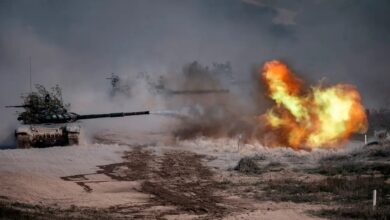
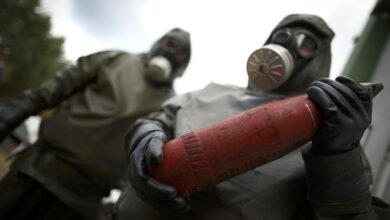

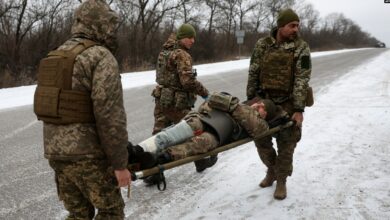
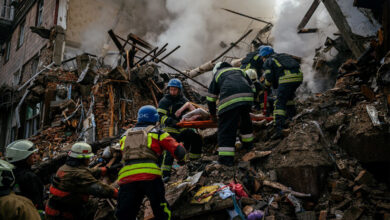

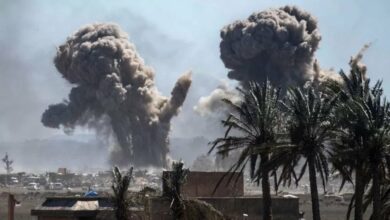
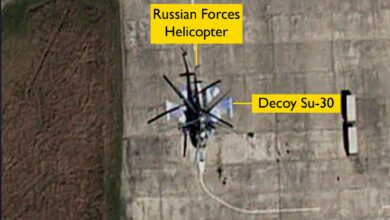
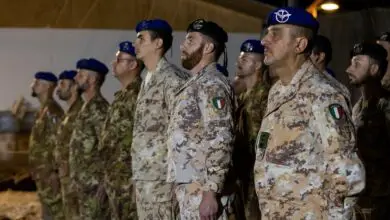
5 Comments